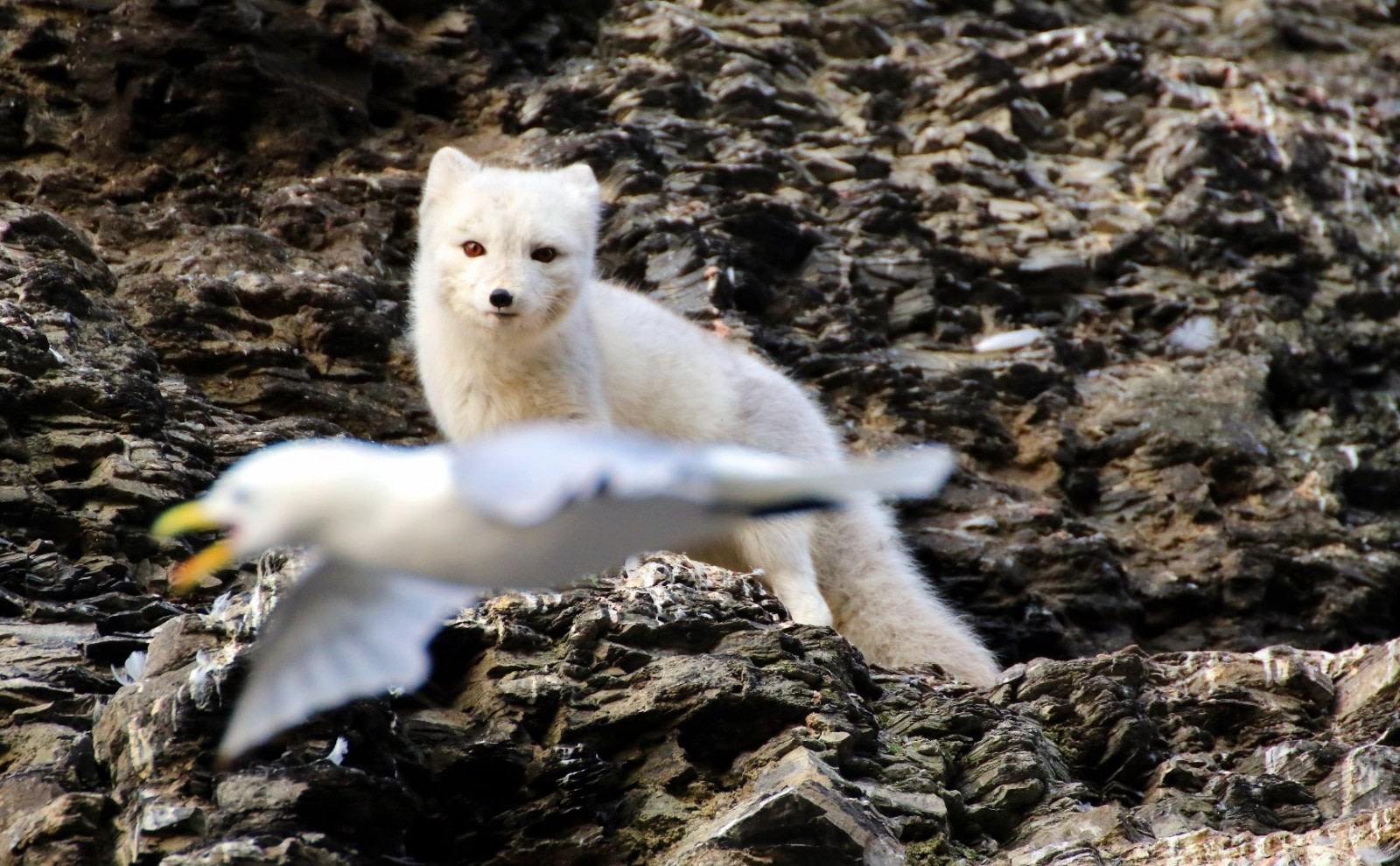Name: Arctic Fox (Vulpes lagopus)
Length: 75 to 100 cm (2.4 to 3.3 feet)
Weight: 2 to 5 kg (5 to 11 pounds)
Location: Arctic
Conservation status: Least concern
Diet: Small animals, carrion, fish, birds, berries, seaweed, insects, eggs, and small invertebrates
Appearance: White in winter; gray-brown backs, yellowish sides, and brown bellies with white spots in summer. Around 3% are charcoal-colored year-round, known as "blue foxes," with up to 10% in Svalbard.
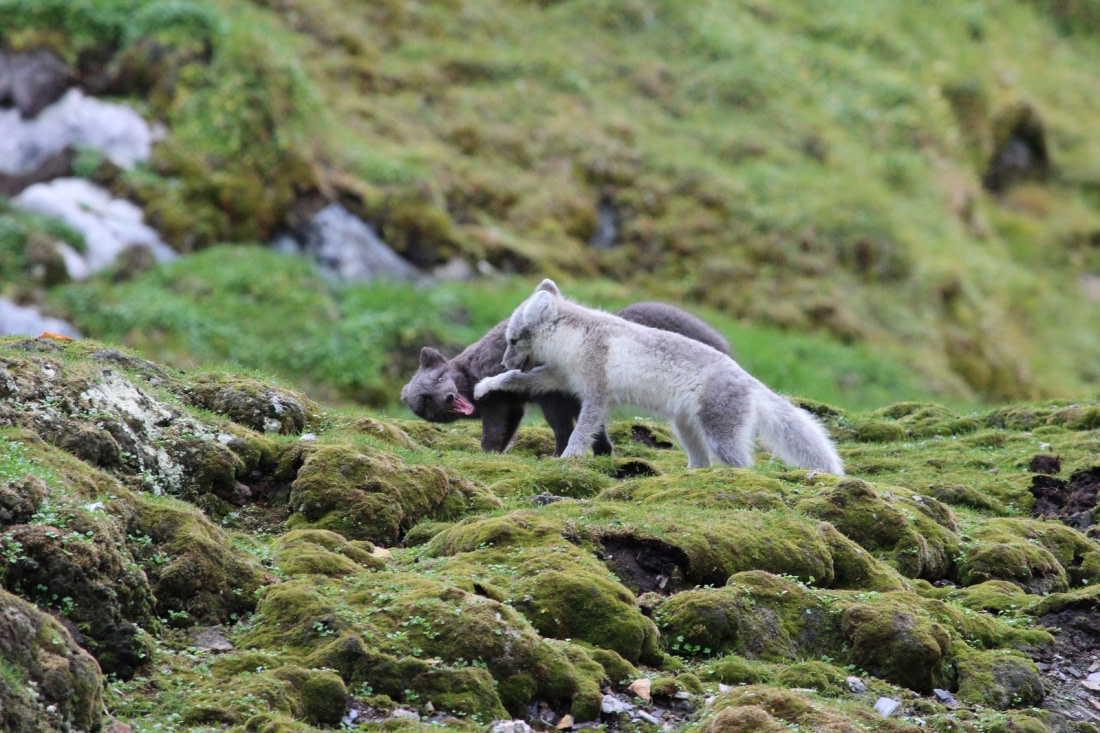
How do Arctic foxes hunt?
Arctic foxes eat a wide variety of food. In summer, lemmings are a staple, but they also hunt birds, eggs, and even seal pups. Their fur changes color to provide camouflage, and they can hear prey moving under the snow. They pounce to catch their prey. In fall, they build up body fat, increasing their weight by up to 50%. In winter, they scavenge leftovers from polar bear kills.
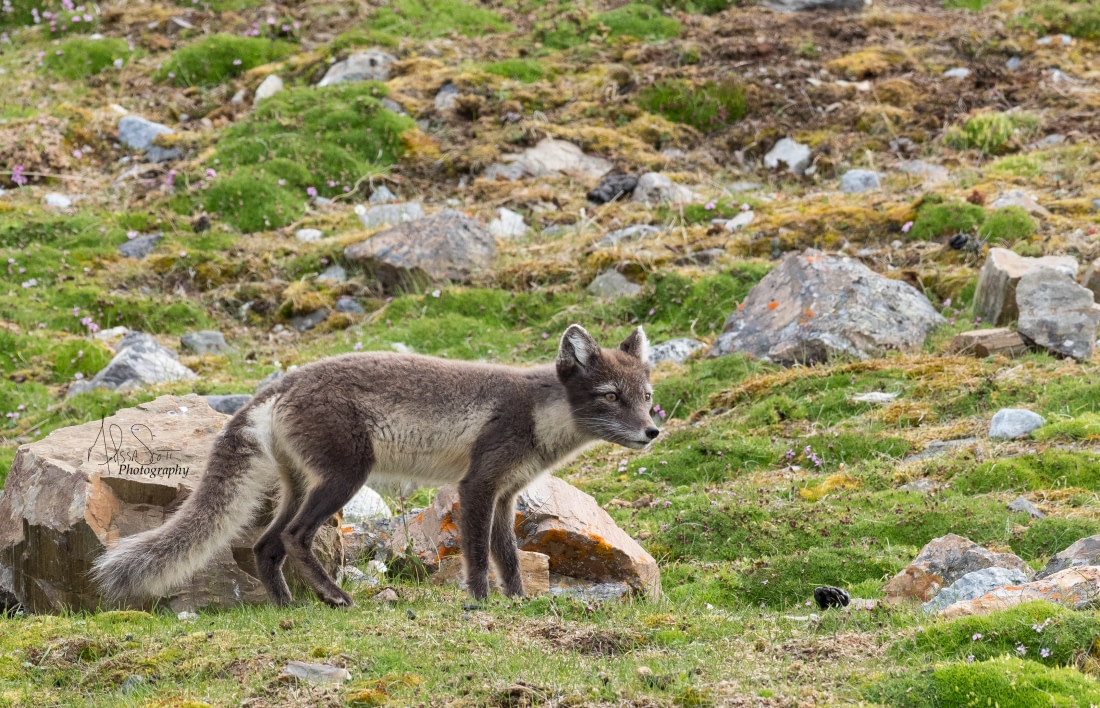
Do Arctic foxes socialize?
Generally solitary until mating, Arctic foxes maintain their own territory in winter.
How fast can Arctic foxes move?
Arctic foxes can sprint up to 50 kph (31 mph).
What are Arctic fox mating rituals like?
Breeding season is from February to April. They mate in monogamous pairs, dig dens or use existing ones, and have litters of 5-10 kits after a 52-day pregnancy. Both parents care for the kits, which emerge from the den about a month after birth and wean after four to five weeks.
How long do Arctic foxes live?
They live 3-6 years in the wild, with a record of 16 years in Longyearbyen. First-year mortality can be as high as 75%.
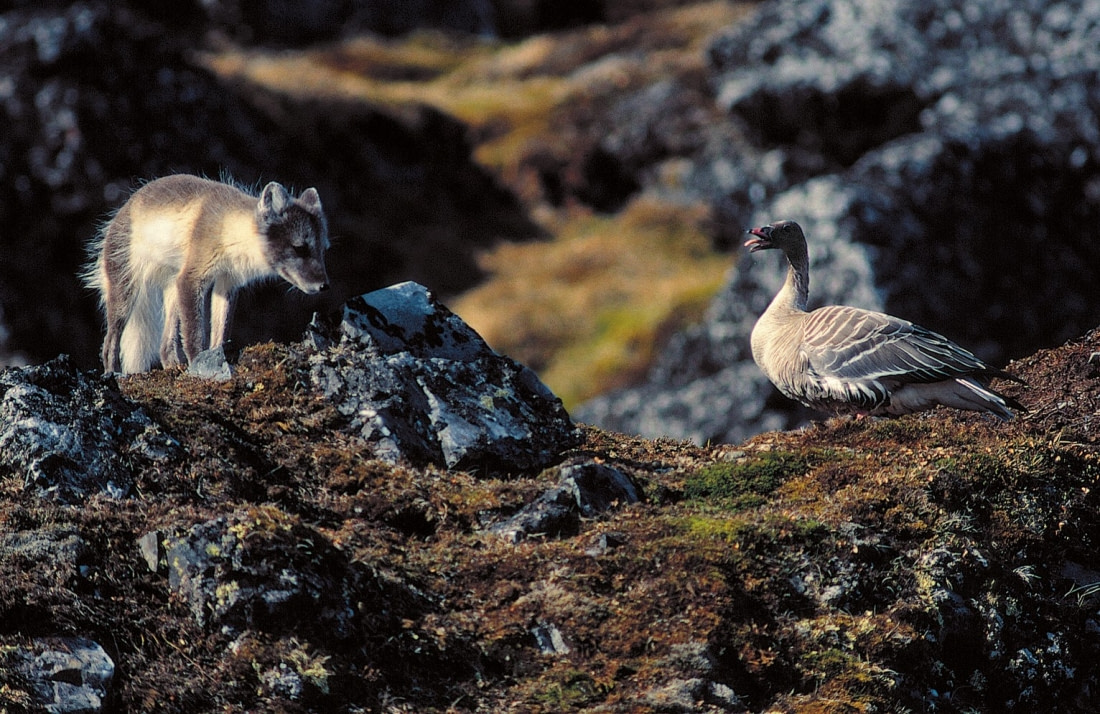
How many Arctic foxes are there today?
Exact numbers are unknown, but they are thought to be in the hundreds of thousands, fluctuating with food availability, especially lemmings.
Do Arctic foxes have any predators?
Traditionally preyed upon by grey wolves, Arctic foxes now face increasing threats from red foxes due to overlapping territories caused by global warming. They were also hunted by fur trappers for their coats.
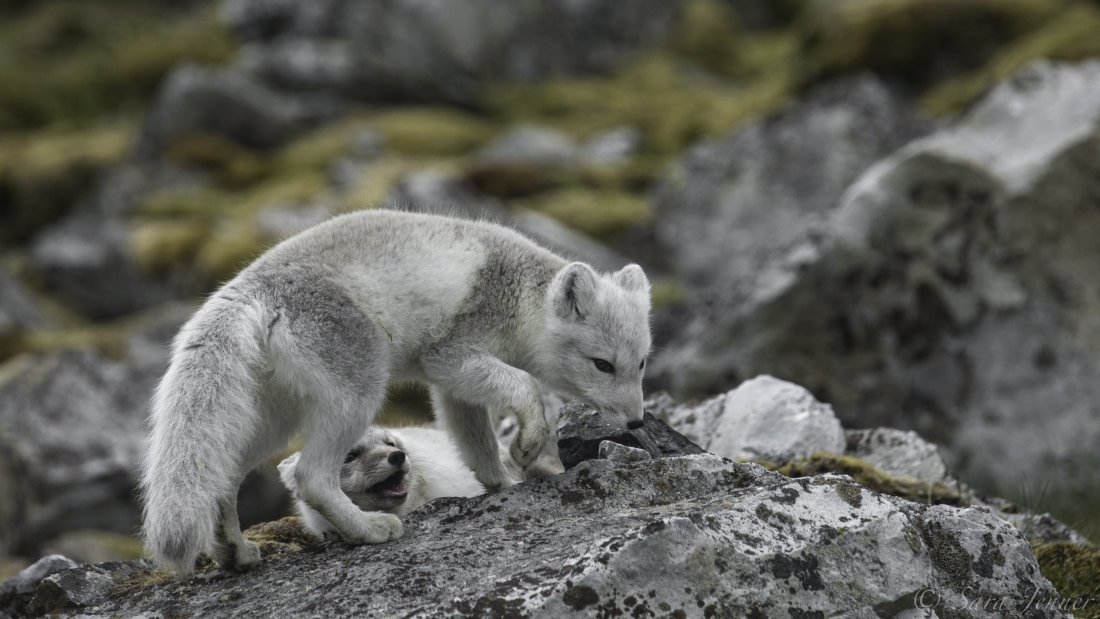
Seven fascinating Arctic fox facts
- They have one of the warmest mammal furs in the world.
- Short, stubby legs keep them low to the ground and out of cold winds.
- Small noses, eyes, and ears help reduce heat loss.
- Fur on their feet prevents slipping on ice.
- They can endure temperatures as low as -50°C (-58°F) before needing to warm up.
- They are the smallest member of the canid family in the Canadian wilderness.
- Their burrows can have dozens of entrances and house generations of foxes.
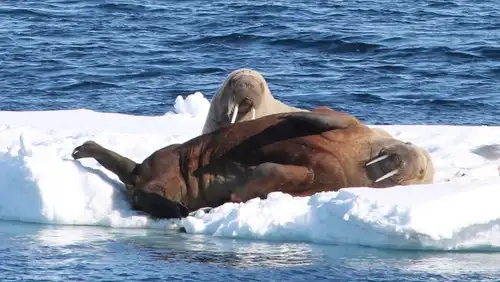
Svalbard’s 12 Most Iconic Animals

Seizing the Season: Spitsbergen’s Late Spring, Early Summer
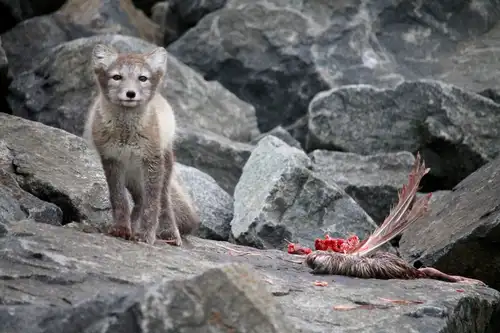
Arctic Foxes: Constant Gardeners of the Arctic




